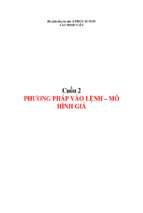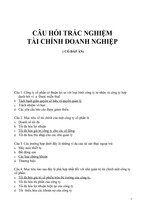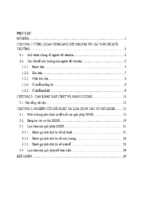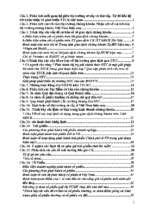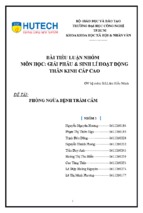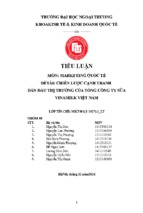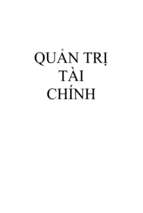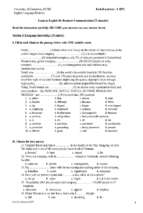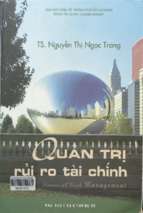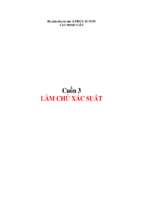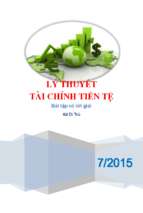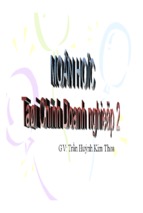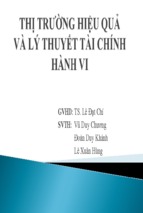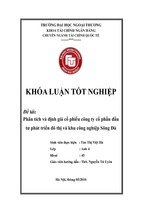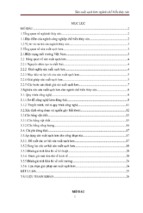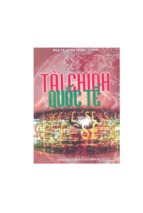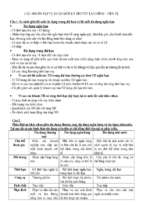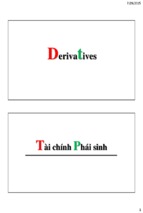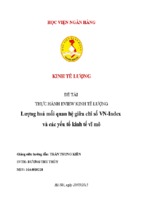Fundamentals of Derivatives Markets (McDonald)
Chapter 4 Introduction to Risk Management
4.1 Multiple Choice Questions
1) To plant and harvest 20,000 bushels of corn, Farmer Jayne incurs fixed and variable costs
totaling $33,000. The current spot price of corn is $1.80 per bushel. What is the profit or loss
if the spot price is $1.90 per bushel when she harvests and sells her corn?
A) $3,000 gain
B) $3,000 loss
C) $5,000 gain
D) $5,000 loss
Answer: C
2) Farmer Jayne decides to hedge 10,000 bushels of corn by purchasing put options with a
strike price of $1.80. Six-month interest rates are 4.0% and the total premium on all puts is
$1,200. If her total costs are $1.65 per bushel, what is her marginal change in profits if the
spot price of corn drops from $1.80 to $1.75 by the time she sells her crop in 6 months?
A) $248 loss
B) $0
C) $252 gain
D) $1,500 loss
Answer: B
3) A 6-month forward contract for corn exists with a price of $1.70 per bushel. If Farmer Jayne
decides to hedge her 20,000 bushels of corn with the forward contract, what is her profit or
loss if spot prices are $1.65 or $1.80 when she sells her crop in 6 months? Her total costs are
$33,000.
A) $1,000 gain or $1,000 loss
B) $0 gain or $3,000 gain
C) $0 loss or $3,000 loss
D) $1,000 gain or $1,000 gain
Answer: D
4) Corn call options with a $1.75 strike price are trading for a $0.14 premium. Farmer Jayne
decides to hedge her 20,000 bushels of corn by selling short call options. Six-month interest
rates are 4.0% and she plans to close her position in 6 months. What is the total premium she
will earn on her short position?
A) $2,800
B) $2,912
C) $800
D) $1,600
Answer: B
1
5) Two 6-month corn put options are available. The strike prices are $1.80 and $1.75 with
premiums of $0.14 and $0.12, respectively. Total costs are $1.65 per bushel and 6-month
interest rates are 4.0%. Farmer Jayne wishes to hedge 20,000 bushels for 6 months. What is
the highest profit or minimum loss between the two options if the spot price in 6 months is
$1.70 per bushel?
A) $88 loss
B) $88 gain
C) $496 loss
D) $496 gain
Answer: B
6) Corn call options with a $1.70 strike price are trading for a $0.15 premium. Farmer Jayne
decides to hedge her 20,000 bushels of corn by selling short call options. Six-month interest
rates are 4.0% and she plans to close her position and sell her corn in 6 months. What is her
profit or loss if spot prices are $1.60 per bushel when she closes her position?
A) $1,000 loss
B) $2,000 gain
C) $2,120 loss
D) $2,120 gain
Answer: D
7) When selecting among various put options with different strike prices, in order to hedge a
long asset position, which of the following statements is true?
A) Higher strike puts cost more and provide higher floors
B) Higher strike puts cost less and provide higher floors
C) Lower strike puts cost more and provide higher floors
D) Lower strike puts cost less and provide higher floors
Answer: A
8) Which of the following situations does NOT describe someone who should implement a
hedge strategy?
A) Mary is very nervous about losing profits if selling prices drop
B) Melanieʹs creditors will not lend her money if her crops might lose money
C) Katherineʹs board of directors will not tolerate losses, even if it means profits are
smaller
D) Dawn wants to reduce price fluctuations, but will need to conduct many transactions
to achieve her goals
Answer: D
9) KidCo. Cereal Company sells ʺSugar Cornsʺ for $2.50 per box. The company will need to buy
20,000 bushels of corn in 6 months to produce 40,000 boxes of cereal. Non-corn costs total
$60,000. What is the companyʹs profit if they purchase call options at $0.12 per bushel with a
strike price of $1.60? Assume the 6-month interest rate is 4.0% and the spot price in 6
months is $1.65 per bushel.
A) $6,504 profit
B) $8,005 loss
C) $12,064 profit
D) $11,293 loss
Answer: A
2
10) KidCo. bought forward contracts on 20,000 bushels of corn at $1.65 per bushel. Corporate tax
rates are 35.00%. Revenue is $100,000 and other costs are $60,000. Spot prices on corn are
$1.75 per bushel. Calculate the after-tax net income.
A) $7,000 loss
B) $7,000 gain
C) $4,550 loss
D) $4,550 gain
Answer: D
11) Farmer Jayne bought a $1.70 strike put option for $0.11 and sold a $1.75 strike call option for
a premium of $0.14. Her total costs are $1.65 per bushel and interest rates are 4.0% over this
period. What is the floor in her strategy assuming a 20,000-bushel crop?
A) $624
B) $1,624
C) $2,624
D) $3,624
Answer: B
12) A $1.75 strike call option has a $0.14 premium. The $1.75 strike put option premium is $0.12.
What is the net cost for Farmer Jayne to create a synthetic short forward contract? (Assume
4.0% interest.)
A) $0.0208
B) -$0.0208
C) $0.000
D) -$0.0424
Answer: A
13) A farmer expects to harvest 800,000 bushels of corn. To eliminate price risk, the farmer elects
to short corn futures. What would cause the farmer to short only 720,000 bushels of corn?
A) Basis risk
B) Illiquid futures markets
C) Margin requirements
D) Quantity uncertain
Answer: D
14) A farmer sells 4 million bushels of corn at a spot price of $2.10 per bushel. The total cost of
production was $9.2 million. The farmer has an effective tax rate of 25%. If the farmer
entered into a futures contract at a price of $2.40 per bushel on 4 million bushels, what is the
farmerʹs net loss or gain?
A) $100,000 loss
B) $800,000 loss
C) $300,000 gain
D) $400,000 gain
Answer: C
3
15) Midwest Airlines is short 2 million gallons of jet fuel. Since no jet fuel contract exists, they
decide to hedge with crude oil futures. One 42 barrel of crude oil is needed to produce 20
gallons of jet fuel. If one contract is for 1,000 barrels, how many crude oil contracts will they
need to properly hedge their exposure?
A) 2,000 contracts
B) 4,200 contracts
C) 20 million contracts
D) 42 million contracts
Answer: B
16) Midwest Airlines is short 2 million gallons of jet fuel. Since no jet fuel contract exists, they
decide to hedge with crude oil futures. The price of jet fuel is currently $2.70 per gallon and
the price of crude oil is $99 per barrel. Assuming they hold the correct number of crude oil
futures contracts, what crude oil price will be needed to perfectly hedge an increase in jet
fuel prices to $2.84 per gallon?
A) $ 2.84
B) $ 94.12
C) $ 99.00
D) $ 104.13
Answer: A, D
17) Which type of hedge has elements of speculation?
A) Pure hedge
B) Stack hedge
C) Straight hedge
D) Strip hedge
Answer: B
18) A bank makes a long term loan and funds the loan by issuing certificates of deposit today, at
three months, six months and nine months. To hedge the interest rate risk of issuing the
CDs, the bank enters into futures contracts with maturities of 3, 6 and 9 months. Which type
of hedge is described by this strategy?
A) Pure hedge
B) Stack hedge
C) Straight hedge
D) Strip hedge
Answer: D
19) Besides speculation, what is another reason risk managers may employ stack and roll
hedging strategies?
A) Near term contracts have more volume
B) Commodity prices are more attractive
C) Arbitrage usually exists
D) Mispricing occurs frequently at long term maturities
Answer: A
4
20) An airline is deciding to hedge with crude oil futures, gasoline futures, heating oil futures or
natural gas futures. Given their associated R-squared relationships between each
commodity and jet fluke prices, which futures contract offers the best hedge?
A) Crude oil, R2 = .25
B) Gasoline, R2 = .18
C) Heating oil, R2 = .46
D) Natural gas, R2 = .36
Answer: C
4.2 Short Answer Essay Questions
1) From a strictly conceptual perspective, why would any manufacturer consider hedging their
variable costs? Answer as if you own the company.
Answer: I manufacture a product. Profits come from selling at the market-determined price,
which is above my production costs. Without hedging, my profit is influenced by
commodity price fluctuations, which are outside the expertise of running my
business. Thus, I hedge that risk.
2) Why would a manufacturer elect to use a long call strategy instead of a forward contract to
hedge the risk associated with variable costs?
Answer: The long call strategy allows the manufacturer to benefit from price declines, while
still maintaining a hedge against price increases.
3) Explain the relationship between options costs and profits under a put option insurance
strategy.
Answer: The higher strike puts have higher premiums since they are deeper in the money.
Deep in-the-money puts have higher profit potential as prices decline. Lower strike
puts cost less, but have reduced profit potential.
4) Why are managerial controls over option and forward trading departments vital to proper
risk control?
Answer: Hedging requires matching derivative trading activities with the operations of the
company. Trading that is not matched to the firmʹs business is speculation and
increases the firmʹs risk.
5) Why are synthetics created and/or calculated when the actual derivative is available?
Answer: The pricing of a synthetic may reveal an arbitrage opportunity, or at least a cheaper
method, by which to employ the desired strategy.
4.3 Class Discussion Question
1) Engage the class in a discussion of why firms hedge risks. Steer them towards an
understanding that firms manufacture products, they do not speculate in commodity
markets. Now, turn the tables and ask why manufacturers do not employ pure hedge
strategies with forward contracts. Try to get the class to arrive at the conclusion that since
firms are experts in their respective industries, their knowledge may benefit them by
implementing creative strategies, while still hedging losses.
5
- Xem thêm -

